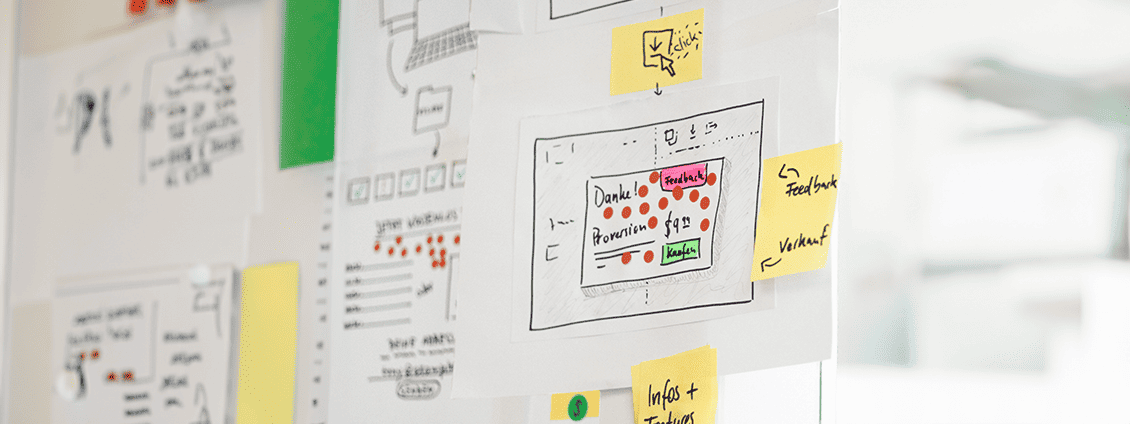- Solutions
Our solutions
Digital solutions combining strategy, technology, automation and people.
Technology advisory
Navigate the fast-changing world
Cloud engineering
Transformational change at scale and speed
Data solutions
Realise the untapped potential of data
AI and machine learning
Leverage your data assets
Application engineering
Optimise and grow your digital investment
Maintenance and support
End-to-end application management
Business process solutions
Manage business processes to reduce operating costs
Quality solutions
Independent testing for your systems and software
Digital experience platforms
Redesign your digital assets for the optimal customer experience
- Industries
Industries
We provide solutions tailored to your sector to assist you in identifying opportunities, realising value and opening up new markets.
Banking
Delivering next-gen banking solutions that drive growth
Healthcare
Patient empowerment, lifesciences, and pharma
Retail
Functional and emotional customer experiences online and in-store
Travel
Airlines, online travel giants, niche disruptors
Media and publishing
Content consumption for the tech-driven audience
Hi-tech and IOT
Real-time information and operational agility and flexibility to respond to market changes
Logistics and supply chain
Reimagine a supply chain that is more flexible and resilient to change
Education
Create an exciting and engaging digital experience for students and departments
Insurance
Streamline operations, expedite claims, and unlock new possibilities
- Our thinking
Our thinking
The latest updates to help future-focused organisations on the issues that matter most in business.
News
Keep up to date with company news and announcements at NashTech
Insights
The latest expertise and thought leadership from the NashTech and our clients
Resources
Expert guidance on everything from complex technological issues to current trends
Digital Leadership Report
Explore insights from the latest world's largest and longest-running study on technology leadership
- Case studies
- About us
About us
Find out what makes us who we are
Leadership
The diverse leadership team at NashTech
Nash Squared
A global professional services organisation with three key areas of focus
Vietnam 360°
Experience a 360 degree all-encompassing virtual tour of NashTech’s Vietnam offices
ESG
Discover our environmental, social and governance commitments
Diversity, equality and inclusion
Making diversity, equality and inclusion an integral part of our culture
Our locations
Discover our network of global offices, centres of excellence and innovation
- English
POC vs MVP: What's the difference?

Are you involved in technology development or are you in the process of creating a proof of concept (PoC)? If so, this expert article will guide you through the different proof of concept phases to ensure that your PoC is a success.
But first, if you need a refresh on what a proof of concept is, then take a look at our guide: What is proof of concept?.
What Are Proof of Concept Phases?
There are five different Proof of Concept phases that should be followed when creating a Proof of Concept (PoC) for a new product or service. These include demonstrating the need for a product, solution ideation, evaluation, design and presentation of a Proof of Concept.
The 5 Proof of Concept Phases
We’re going to outline five proof of concept phases that you should follow when starting out on your technology development journey.
Step 1 – Demonstrating a Need for the Product
The first proof of concept phase to consider is demonstrating a need for the product or service you’re looking to develop. This involves researching your target market and establishing whether there is sufficient demand for the product.
A useful activity to carry out at this stage is to speak to a sample of prospective customers or users. You’ll want to find out what they expect from a product or service like the one that you are designing. The idea during this initial phase is to gain valuable insights that you may not have considered without speaking to potential customers.
Demonstrating the need for your product or service will reassure stakeholders that there is value in progressing through the rest of the proof of concept phases. Having early backing from your stakeholders is important as you move forward on your technology development journey.
Step 2 – Solution Ideation
The second stage of the five proof of concept phases is solution ideation. This follows on from the first phase, where we recommended speaking to potential customers. Following those initial interviews, you’re likely to have identified several pain points that you might not have considered otherwise.
You’ll want to make sure that your product or service addresses any pain points discovered. You may have to tweak some aspects of your proof of concept at this stage. This allows you to save time and money later when you’re further down the development process.
Step 3 – Evaluation of Ideas
Now it’s time to evaluate each idea that you identified in the previous stage. We recommend looking at each idea in isolation for the following criteria:
- Total cost
- Length of timeline
- Technology required
- Operational capacity
- Competition
- Resources needed
Once you’ve analysed each solution, you can prioritise which ideas are going to be feasible to implement. These solutions will then make up your proof of concept product proposal.
Step 4 – Design the Proof of Concept
The fourth step of the five proof of concept phases is designing your PoC. This is where the development starts to feel a bit more real. You’ll be creating a design that addresses the pain points you identified previously.
All of your prior hard work will help craft your proof of concept, and it could look a lot different to what you had initially envisioned.
It’s also useful to roll this design out to test users. You could revisit the sample you spoke to initially, that way you’ll learn whether your proof of concept addresses their pain points well. Likewise, you could choose a new sample of users to test your proof of concept. Without preconceived ideas of your product, they could bring different perspectives to the table.
Step 5 – Presentation of PoC
The final phase in your proof of concept development is the presentation of your PoC to relevant stakeholders and investors. It’s important to clarify what problems your product solves, its features, and the technologies used to create it.
Your PoC presentation should include the following:
- Production schedule
- Total costings of product development
- Success criteria
- All resources required
- User training process
Once your proof of concept has been approved by stakeholders and potential investors, you can move forward to the prototype stage and continue your technology development journey.
Learn the differences between Proof of Concept and Prototypes here.
Expert Technology Solutions
Discover a range of expert technology solutions from NashTech. From technology advisory, business process solutions and application services, to data analytics and much more.
Partner with us for end-to-end technology services that improve user experience and drive growth.
Suggested articles

The art of human-AI collaboration: A case study in model improvement
For over 16 years, NashTech has been a trusted partner, providing data management solutions that have fuelled the exponential growth of our client’s online shopping platform. The approach has...

From rising above adversity to riding the wave of digital transformation in the education sector
Explore how NashTech help Trinity College London ride the wave of digital transformation in the education sector

Migrating and modernising the virtual learning environment to AWS for an enhanced experience
The migrated and modernised Moodle infrastructure means that The Open University can now take advantage of cloud benefits.
We help you understand your technology journey, navigate the complex world of data, digitise business process or provide a seamless user experience
- Topics:


